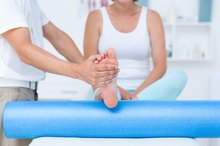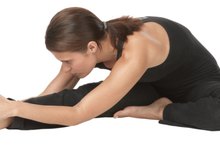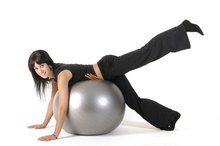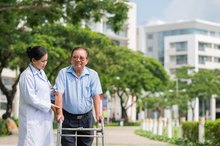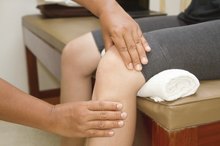How to Start Walking After Cast Removal
The relief you feel after a cast is removed from your leg or foot can be quickly replaced by a feeling of unease about walking again. It is normal to experience pain, stiffness and swelling of the immobilized joint that can persist for some days after cast removal, not to mention skin scaling. The muscles on an immobilized leg most likely have atrophied, meaning they have lost size and strength. "Because you haven't moved your leg for a while, you may even have stiffness and weakened muscles in uninjured areas," states the OhioHealth website 3. Starting slowly with stretches will help.
Read more about how to remove a cast.
Start walking on the leg as soon as it feels comfortable and if your doctor says you can. You may want to use crutches or a cane for partial support. Make sure you walk with your foot pointing forward as much as possible because this will help strengthen the calf muscle.
Read more about how to care for skin after cast is removed.
Exercises for a Torn Quad
Learn More
Engage in cardiovascular exercise, especially if you are planning to return to an active lifestyle. "A cardiovascular program accelerates your rate of return and helps if you are less active by increasing the blood flow and oxygen to the healing tissue to speed the healing process," explains the Hughston Sports Medicine Foundation 1. Using a bike is a good choice because the motion will force your leg to bend, thus also helping you regain movement in stiff joints.
Do isometric exercises to regain muscle strength by contracting the muscles surrounding a joint against a stable object without moving the joint. For example, if you stand in front of a wall and press your palms as hard as you can against the wall as if you were trying to push the wall away, you are isometrically working your chest muscles.
Physical Therapy for a Healed Broken Ankle
Learn More
Add exercises specifically designed to strengthen your atrophied leg muscles and do them twice daily. To strengthen your calves, rotate your foot in big circles, move the foot side to side, and point and flex the foot. When your calf and ankle feel stronger, place a resistance band under your foot when you point and flex the foot. If you had an above-knee cast removed, train your thigh and hip muscles by lying face up on the floor, bringing the knee of your injured leg toward your chest and back, and raising your straight leg up as high as possible and then lowering it. Repeat as many times as you can.
Include full-body exercises such as standing up and doing heel raises and standing on the injured foot, holding for as long as you can, once daily. Also, stretch your calf muscles by supporting your hands against the wall, leaning toward the wall as much as you can, while pushing your heels toward the floor.
Related Articles
References
Writer Bio
Julia Derek is a certified Manhattan-based trainer and writer. She has 14 years experience in the fitness industry. She works at Reebok Sports Club/NY or through her company www.AdrenalineFitnessNY.com. Her writing has appeared in New York Post, Los Angeles Daily News, and AM/NY. She attended George Mason University.

